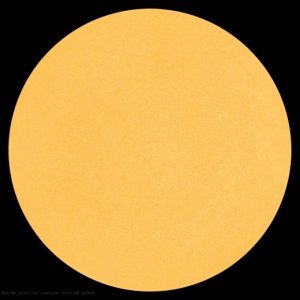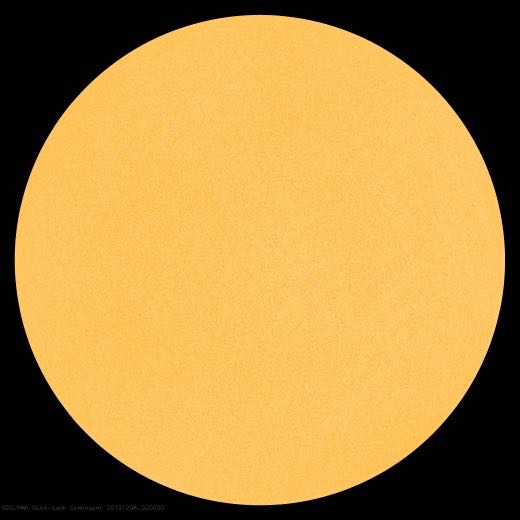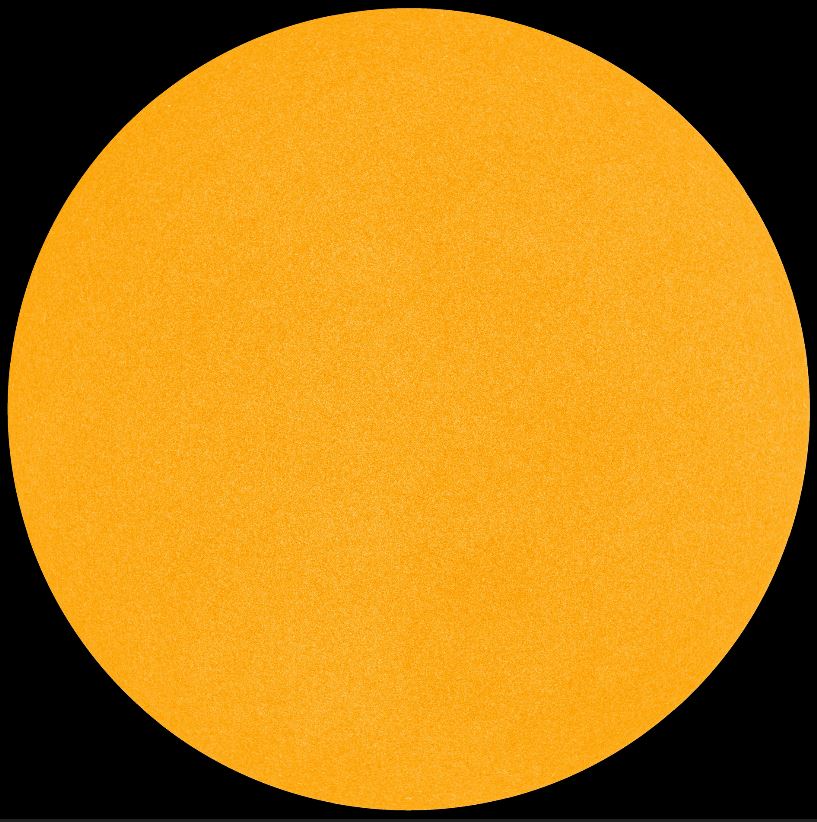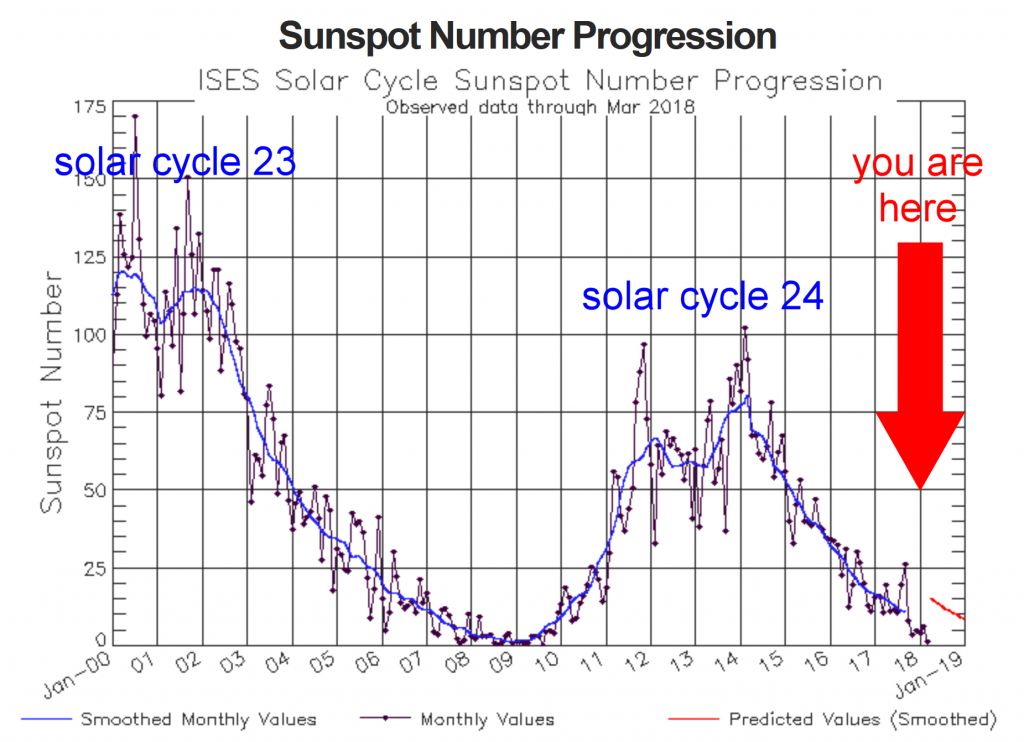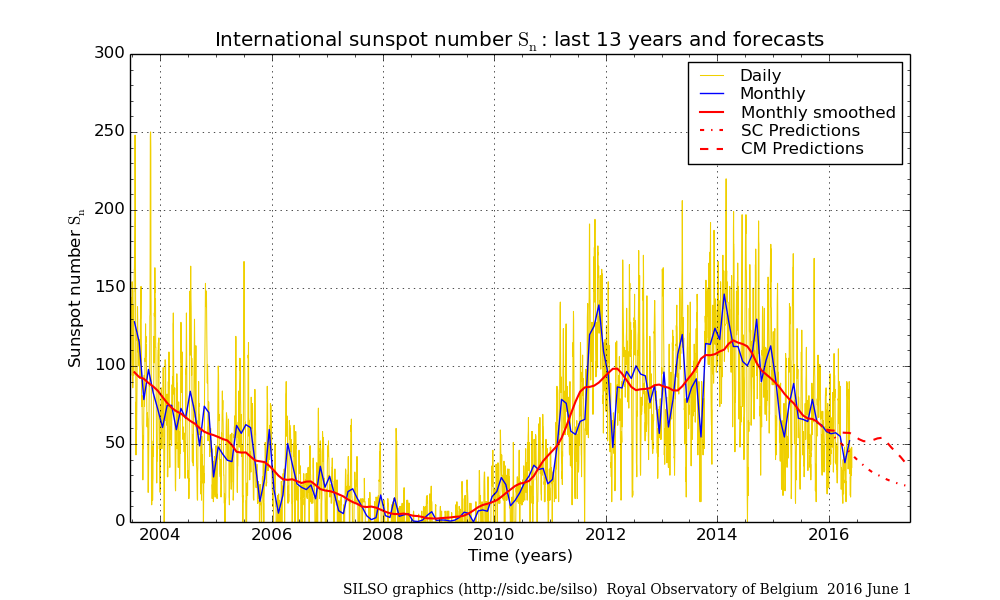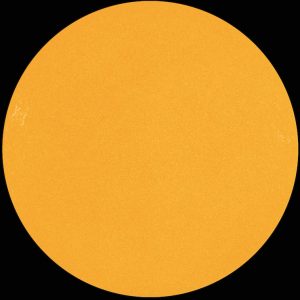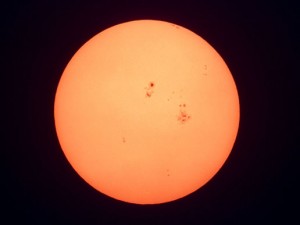Another [sun] spotless day on the sun.
Spaceweather.com reports that today we surpassed the largest number of spotless days (270) of the previous 2008 Solar Minimum cycle. The current spotless streak stands at 33 days and is quite possibly on its way to surpass the previous longest streak of this minimum at 36 days. And you have to go back to 1913 to find a year that had more spotless days (311)!
The bad news: the Solar Minimum could deepen as many scientists have calculated minimum may not occur until April 2020. You might be wondering: when is the next Solar Maximum? That’s forecast to be July 2025. Both the minimum & maximum forecasts have a +/- 6-month error.
How has the historic Solar Minimum impacted your radio listening? I know it’s impacted my motivation to set-up my solar telescope for solar observation.
Guest Post by Troy Riedel

